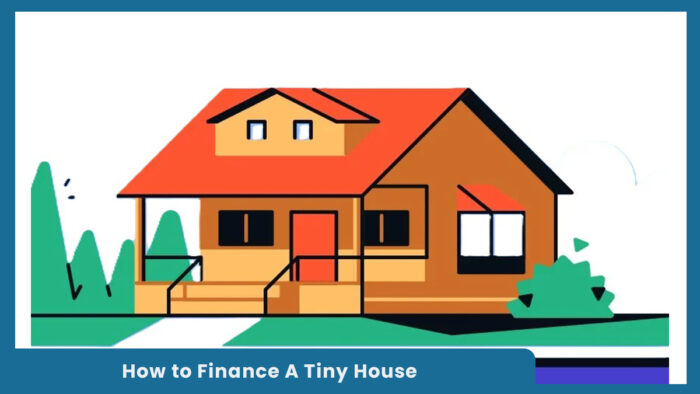How to Finance A Tiny House – Tiny homes can be a cost-effective alternative to traditional housing, especially as real estate prices continue to rise. While the lower price tag is appealing, financing a tiny home can be a bit more complex. These homes often don’t qualify for traditional mortgage loans, so it’s important to understand the different financing paths available.

Tiny homes usually don’t qualify for standard mortgage loans but can be financed with personal loans or home equity loans. Some builders and manufacturers offer in-house financing with competitive terms. Not all tiny homes meet the criteria required for financing, so be sure to review the specifics.
What Is a Tiny Home?
There’s no single definition, but a tiny home is generally considered a freestanding living space under 400 square feet. Despite their size, these homes usually come with the essentials—bedroom space, a bathroom, kitchen, and some form of storage or outdoor living area.
Popular types of tiny homes include:
- Homes on wheels
- Small homes built on permanent foundations
- Converted shipping containers or trailers
- Motorhomes and camper vans
- Backyard cottages or in-law units
How Much Does a Tiny Home Cost?
Tiny homes are often more affordable than traditional houses. While the median price for an existing home in late 2024 was over $400,000, many tiny homes fall between $20,000 and $180,000.
Costs depend on materials, size, finishes, and whether you build it yourself or hire professionals. Tiny homes average about 225 square feet, and prices range from $150 to $450 per square foot, sometimes making them more expensive by square foot than full-size homes.
Financing Options for Tiny Homes
1. Personal Loans
These are among the most flexible financing options. Personal loans can be used for just about any purpose, including buying or building a tiny home. Loan amounts range from $1,000 to $100,000, and most are unsecured, meaning you don’t need to use your home as collateral.
Rates vary, but the best rates go to borrowers with strong credit. Some lenders even offer personal loans specifically designed for tiny home purchases. If your credit is less than ideal, consider a secured personal loan to access better terms.
2. Home Equity Loans
If you already own a home, you may be able to tap into your home equity to finance a tiny home. This option is often ideal for those who are adding a tiny house to their existing property, such as a guest suite or rental unit. It’s important to confirm that you have enough equity and that the loan amount meets your lender’s minimum requirements.
3. Home Equity Line of Credit (HELOC)
A HELOC functions like a credit card tied to your home’s equity. You can borrow small amounts as needed, which makes it a great option if you’re building a tiny home in stages. Just remember, this is a secured loan, so your home is at risk if you can’t repay the borrowed funds.
4. Chattel Loans
For tiny homes not built on permanent foundations, a chattel loan might be an option. This type of loan is secured by the home itself, rather than the land. The lender holds ownership until the loan is fully repaid. Interest rates are typically higher than traditional mortgages, and repayment terms are shorter.
5. RV Loans
If your tiny home qualifies as a recreational vehicle, an RV loan may be available. However, these loans are usually only for part-time use and may not be approved if the tiny home is your full-time residence.
6. Builder or Manufacturer Financing
Some tiny home builders offer financing directly. This can simplify the buying process and may provide better rates or terms than a personal loan. Be sure to compare options and review the builder’s eligibility requirements.
Pros and Cons of Tiny Living
Benefits:
- Lower housing costs
- Reduced utility expenses
- Simplified lifestyle with less clutter
- Flexibility and mobility
Drawbacks:
- Limited storage space
- Local zoning restrictions
- Financing can be complicated
- May depreciate in value faster than traditional homes
Important Things to Consider
Before financing a tiny home, ask the right questions and research thoroughly.
- Zoning laws and permits: Local regulations may restrict where you can place or live in a tiny home. Check this before making any decisions.
- Depreciation: Unlike traditional homes, many tiny homes lose value over time, especially if they are mobile.
- Land purchase: If your tiny home is not on wheels, you may need to buy land. This adds a significant cost and requires separate financing.
Final Thoughts
Tiny homes can offer a more affordable and minimalist lifestyle, but the financing process is not always straightforward. Whether you choose a personal loan, a home equity loan, or financing through a builder, take the time to compare your options. Look closely at interest rates, repayment terms, and loan eligibility before committing. With the right approach, financing a tiny home can help you take that next step toward simplified living.



